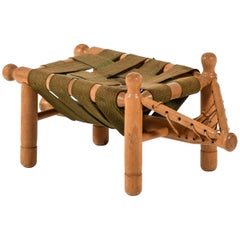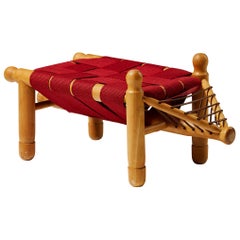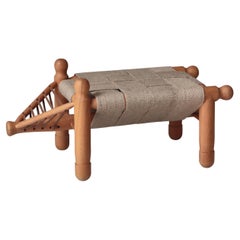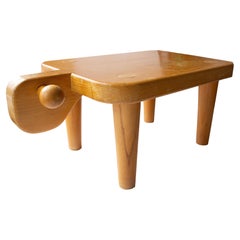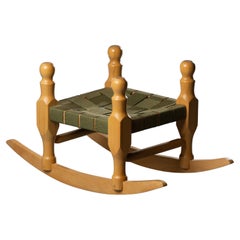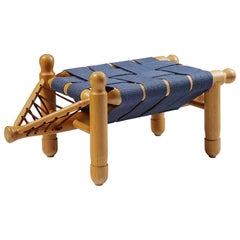Erik Hoglund Stool
Vintage 1950s Swedish Scandinavian Modern Stools
Hemp, Beech
Vintage 1950s Swedish Mid-Century Modern Stools
Leather, Hemp, Beech
Vintage 1950s Swedish Scandinavian Modern Stools
Leather, Beech
Vintage 1970s Swedish Scandinavian Modern Stools
Beech, Lacquer
Recent Sales
Vintage 1960s Swedish Scandinavian Modern Stools
Beech
Vintage 1950s Swedish Scandinavian Modern Footstools
Leather, Hemp, Beech
Vintage 1960s Swedish Scandinavian Modern Stools
Wood
People Also Browsed
Vintage 1950s German Mid-Century Modern Stools
Metal
20th Century French Mid-Century Modern Stools
Wood, Pine
2010s Italian Modern Chandeliers and Pendants
Brass
21st Century and Contemporary Spanish Minimalist Side Tables
Marble, Travertine
Erik Höglund for sale on 1stDibs
Swedish glass master Erik Höglund reveled in unconventional techniques and practices — the Karlskrona native once drove glassblower Ruben Hjelm out of a studio at Boda after mixing potatoes into a crucible of molten glass to determine if he could generate bubbles in the finished object. Höglund always walked his own path, and his individuality and creative spirit defines the range of decorative objects, lighting fixtures and other works in glass that he created over the years.
Höglund was born in 1932 and studied drawing and sculpting at the Swedish School of Arts. Despite his limited experience with glass, Höglund joined Boda Glassworks when the manufacturer reached out to the school for the services of a young glass artist. He taught himself how to blow glass at night and found inspiration on travels through Europe as well as in his everyday life, creating sculptures that boasted exquisite color pairings and subdued, streamlined forms. He worked at Boda for 20 years.
The Swedish National Museum purchased Höglund’s early works for an exhibition of Swedish glass art, and in 1957, Höglund’s stunning and expressive objects and sculptures earned the Danish Lunning Prize — the highest honor for an up-and-coming Scandinavian artist. He garnered international acclaim and his colorful iron and glass candleholders, candelabras and vases went on display in New York City. His work is held in the collections of the Blekinge Museum, the National Museum of Stockholm and the Cooper Hewitt, Smithsonian Design Museum.
Höglund left Boda in 1973 to establish his own smithery. He returned to glass design in the subsequent years, when the legendary innovator created richly colored and provocative works for Pukeberg, Åhus, Nový Bor and other manufacturers.
On 1stDibs, find a collection of Erik Höglund decorative objects, lighting and dinnerware.
A Close Look at Scandinavian-modern Furniture
Scandinavian modernism is perhaps the warmest and most organic iteration of modernist design. The work of the designers associated with vintage Scandinavian modern furniture was founded on centuries-old beliefs in both quality craftsmanship and the ideal that beauty should enhance even the humblest accessories of daily life.
ORIGINS OF SCANDINAVIAN MODERN FURNITURE DESIGN
- Emerged in the 1930s
- Scandinavian design and Nordic design originated primarily in Denmark, Sweden, Finland, Iceland and Norway
- Introduced in the United States in mid-20th century
- Informed by the Bauhaus; influenced American mid-century modernism
CHARACTERISTICS OF SCANDINAVIAN MODERN FURNITURE DESIGN
- Bold, clean lines and simple, sturdy symmetries
- Use of natural materials — native woods such as pine, ash and beech
- Open, airy spaces
- Promotion of functionality
- Emphasis on craftsmanship; rooted in cabinetry profession and traditional construction techniques
- Minimal ornamentation (little to no embellishment)
- A neutral or light color palette owing to prominence of light woods
SCANDINAVIAN MODERN FURNITURE DESIGNERS TO KNOW
- Alvar Aalto
- Hans Wegner
- Kaare Klint
- Arne Jacobsen
- Greta Magnusson Grossman
- Finn Juhl
- Arne Vodder
- Verner Panton
ICONIC SCANDINAVIAN MODERN FURNITURE DESIGNS
VINTAGE SCANDINAVIAN MODERN FURNITURE ON 1STDIBS
The gentle, organic contours that are typical of Scandinavian design appear in the furnishings and decor created by Danish, Finnish and Swedish designers not as a stylistic gesture, but rather as a practical, ergonomic — and, as importantly, elegant — response to the human form.
Each nation produced exceptional talents in all areas of the applied arts, yet each had its forté. Sweden was home to Greta Magnusson Grossman and Bruno Mathsson — creators of the classic Grasshopper lighting series and Berlin daybed, respectively — but the country excelled most notably at ceramics. In the 1920s at the great Gustavsberg porcelain manufactory, Wilhelm Kåge introduced pieces in the Scandinavian style based on influences from folklore to Cubism; his skills were passed on to his versatile and inspired pupils Berndt Friberg and Stig Lindberg.
Likewise, Finland produced a truly ingenious Scandinavian modern furniture designer in the architect Alvar Aalto, a master at melding function and artistic form in works like the Paimio chair, created in collaboration with his first wife, Aino. Yet Finnish glassware was pre-eminent, crafted in expressive, sculptural designs by Tapio Wirkkala and Timo Sarpaneva.
The Danes excelled at chairs. Hans Wegner and Arne Jacobsen were exemplars of the country’s facility with wood, particularly teak.
Wegner created such iconic pieces as the Round chair and the Wishbone chair; Jacobsen — while the revolutionary architect and furniture innovator produced the best-selling plywood Ant chair — designed two classic upholstered pieces of the 1950s: the Swan chair and Egg chair. The list of great Danes could go on and on, including Finn Juhl, a stylistic maverick and maker of the bold Chieftain chair; Poul Kjaerholm, with his lean metal-and-rattan aesthetic; and Verner Panton, who introduced a vibrant Pop note into international design.
Today, decades after their heyday, the prolific, ever-evolving Scandinavian modernists continue to amaze and delight, and interior designers all over the world use their pieces to bring warmth to any given space.
On 1stDibs, you will note both instantly recognizable vintage Scandinavian modern chairs, sofas, rugs and tables — those that have earned iconic status over time — and many new discoveries.
Finding the Right Stools for You
Stools are versatile and a necessary addition to any living room, kitchen area or elsewhere in your home. A sofa or reliable lounge chair might nab all the credit, comfort-wise, but don’t discount the roles that good antique, new and vintage stools can play.
“Stools are jewels and statements in a space, and they can also be investment pieces,” says New York City designer Amy Lau, who adds that these seats provide an excellent choice for setting an interior’s general tone.
Stools, which are among the oldest forms of wooden furnishings, may also serve as decorative pieces, even if we’re talking about a stool that is far less sculptural than the gracefully curving molded plywood shells that make up Sōri Yanagi’s provocative Butterfly stool.
Fawn Galli, a New York interior designer, uses her stools in the same way you would use a throw pillow. “I normally buy several styles and move them around the home where needed,” she says.
Stools are smaller pieces of seating as compared to armchairs or dining chairs and can add depth as well as functionality to a space that you’ve set aside for entertaining. For a splash of color, consider the Stool 60, a pioneering work of bentwood by Finnish architect and furniture maker Alvar Aalto. It’s manufactured by Artek and comes in a variety of colored seats and finishes.
Barstools that date back to the 1970s are now more ubiquitous in kitchens. Vintage barstools have seen renewed interest, be they a meld of chrome and leather or transparent plastic, such as the Lucite and stainless-steel counter stool variety from Indiana-born furniture designer Charles Hollis Jones, who is renowned for his acrylic works. A cluster of barstools — perhaps a set of four brushed-aluminum counter stools by Emeco or Tubby Tube stools by Faye Toogood — can encourage merriment in the kitchen. If you’ve got the room for family and friends to congregate and enjoy cocktails where the cooking is done, consider matching your stools with a tall table.
Whether you need counter stools, drafting stools or another kind, explore an extensive range of antique, new and vintage stools on 1stDibs.
